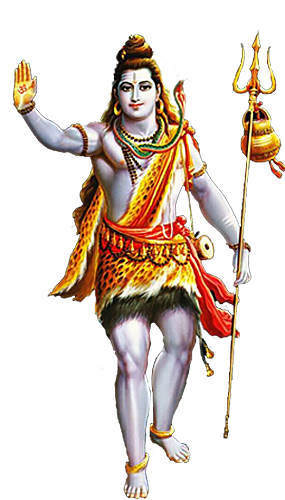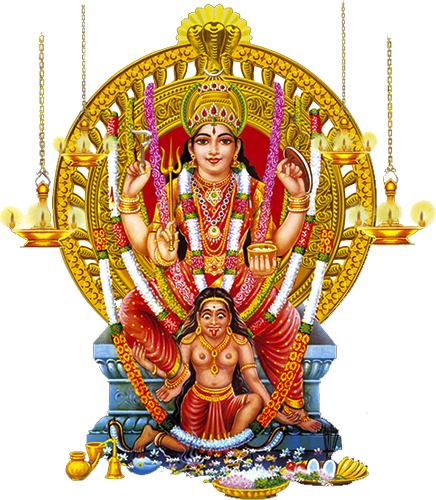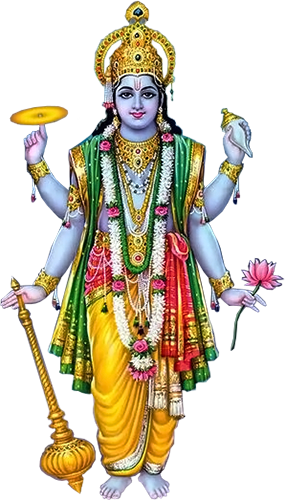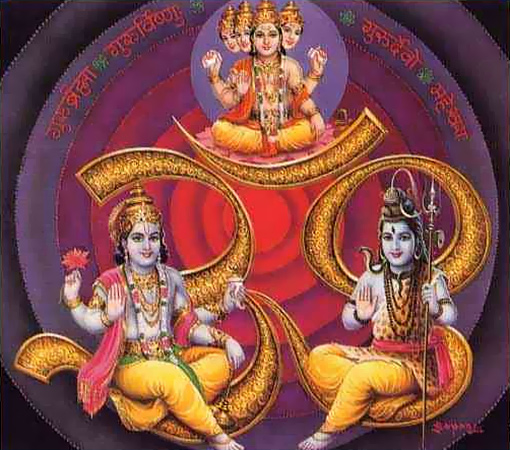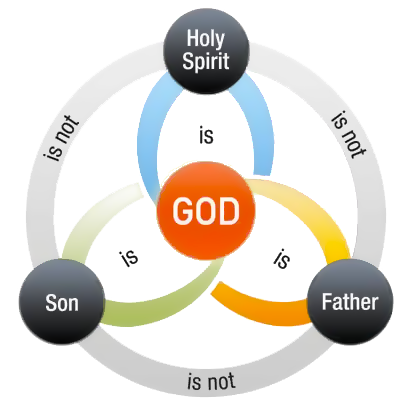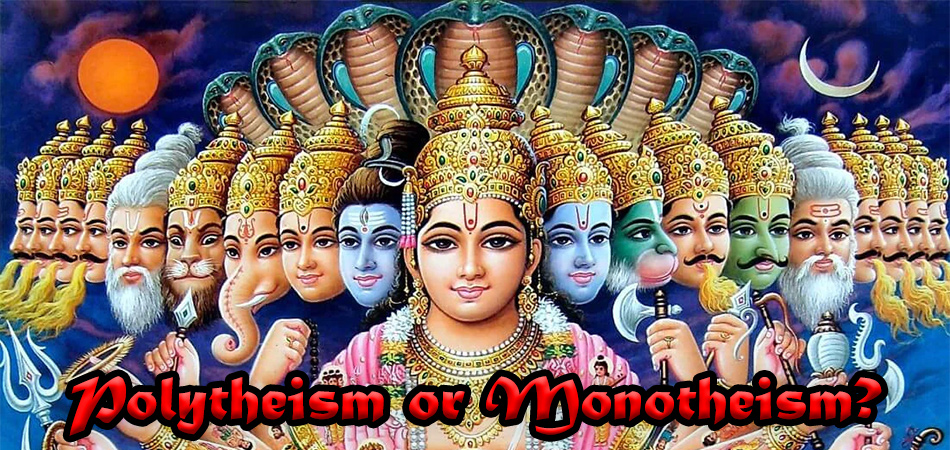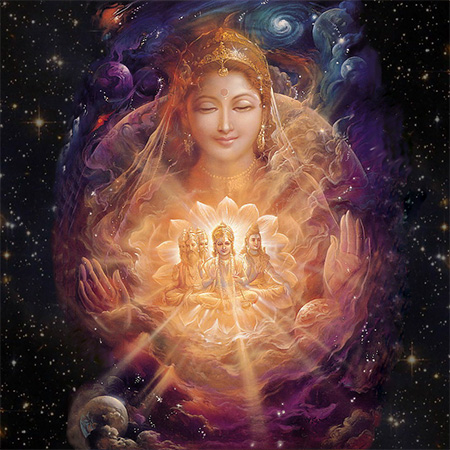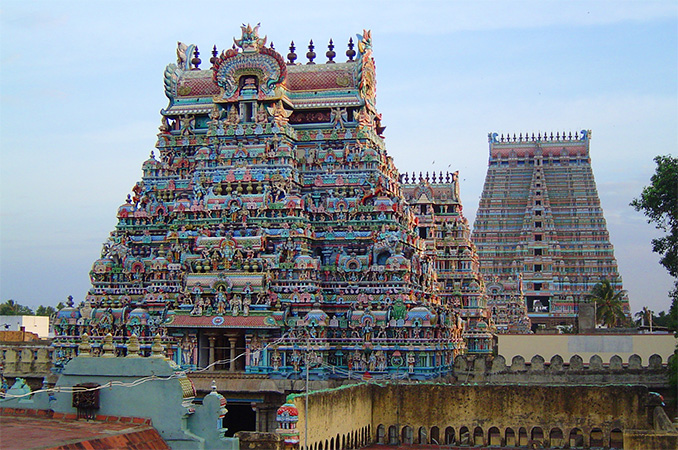One of the earliest and
still one of the most influential scriptures to articulate the theology
of the Hindu Great Goddess, Mahadevi (or simply Devi) is the the Devi Mahatmya (Glorification of the Great Goddess),
which perhaps dates from the sixth or seventh centuries CE. It
describes her mythic origins when the gods are defeated by the Buffalo
Demon, Mahisa, who had driven them from heaven. The myth is retold with
elaborations in other texts, such as the Devi Bhagavata Purana.
Mahisa had received a boon making him invulnerable to all except women,
whom he was sure would be incapable of defeating him. Pooling together
their collective effulgence (tejas),
the gods produced a mass of light that coalesced into the form of an
irresistibly beautiful young woman, whom they equipped with weapons
drawn from their own armaments. Paralleling Visnu’s characteristic
involvement in the preservation of order by overthrowing the forces
that threaten the cosmic balance, the Mahadevi sets out to destroy the
Buffalo Demon. Wielding the trident of Siva, Visnu’s discus, and other
weapons in her many arms she rode out on her mount, the great lion
Mahasingha, and lured Mahisa into battle. After slaying many members of
his demon cohort, she finally face him in battle. Quaffing nectar from
her cup, Devi leapt upon the demon, crushed him with her foot and
impaled him with her spear. As he crawled out of his own buffalo mouth,
she beheaded him with her great sword. The gods sang her praises. One
of Mahadevi’s most widespread images is as Mahisamardini (Crusher of
the Buffalo [Demon]).
Despite her warrior-like persona in many myths, Devi is
typically invoked as Ma (Mother). To her devotees she is the cosmic
mother, like a lioness with her cubs, powerfully protective of her
children and capable of overcoming all dangers that may confront them.
Unlike other spouse goddesses, such as Sita and Parvati, she is not
typically seen as the wife, consort, or sakti
of particular male gods, but is regarded by her devotees as utterly
independent, and embodying the powers of all the gods combined. Durga
is also seen as incorporating all goddesses, each of whom is a
particular manifestation of her. Thus she embodies the powers of
creation, preservation, and destruction .... Philosophically, Devi
incorporates the principles of supreme cosmic power, Sakti, manifest
creation or nature, Prakrti, and the great matrix of phantasmal
reality, Mahamaya. (Introducing Hinduism, 211)
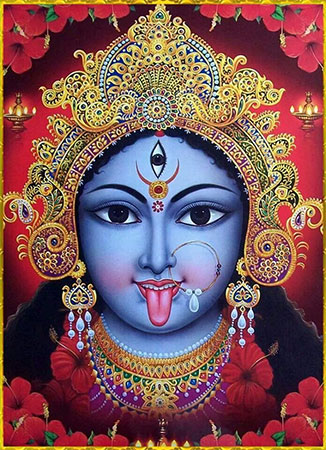
|
The dark skinned goddess Kali (Dark Time) has
riveting imagery. There are no references to her in the Vedas, although
in later writings she is occasionally linked with such Vedic goddesses
as Ratri (Night). Kali’s name is a feminine form of the Sanskrit word kala,
which means both “black” and “time.” Appropriately, Kali is associated
with the destruction that Time brings to all created things, and she is
mostly portrayed with black or dark skin. In the Devi Mahatmya section of the Markendeya Purana,
dating from about the sixth or seventh century CE, Kali’s mythic
origins are explained. During a fierce battle with demons, the Great
Goddess (Devi) grows angry and her complexion turns dark. Kali emerges
from the Devi’s forehead and is gruesome in appearance. She is black,
withered, with a gaping mouth and lolling tongue. She wears a garland
of human heads. She destroys demons on the battlefield by ripping them
apart, devouring them in her jaws, or beheading them with her sword.
Later in this tale, she is summoned to confront the demon Raktabija,
whose every drop of blood on contact with the earth spawns a demon
clone, making him virtually impossible to defeat. Kali’s gaping mouth
devours the demons that have already been produced, and as a host of
goddesses unleash their weapons on Raktabija, Kali laps up every drop
of his blood before it touches the ground, destroying him. ...
Contemporary lithographs of Kali portray her
naked, with black or dark blue skin, and with disheveled hair. She
wields a bloody cleaver in one hand, and holds a severed human head in
another. She wears a garland of human heads or skulls, and a skirt or
belt made of severed human arms. Her bloody tongue protrudes from her
mouth, and she stands atop the body of a supine, quiescent Siva. Once,
to bring an end to an unstoppable rampage that threatened to destroy
the world prematurely, Siva prostrated himself like a corpse on the
ground before her. Devotees explain that only when she stepped upon his
breast did she realize what she had done, and calmed down. In a
reversal of the myth in which Parvati domesticates the wild and wayward
Siva, it is Siva that pacifies the uncontrollable Kali. (Introducing Hinduism, 209-10)
| Kali is the goddess in her fierce form.
She may be portrayed dripping with blood, carrying a sword and a
severed head, and wearing a girdle of severed hands and a necklace of
skulls symbolizing her aspect as the destroyer of evil. What appears as
destruction is actually a means of transformation. With her merciful
sword she cuts away all personal impediments to realization of truth
for those who sincerely desire to serve the Supreme. At the same time,
she opens her arms to those who love her. Some of them worship her with
blood offerings from animal sacrifices, but some shakti temples are now doing away with this practice, at the behest of animal lovers. (Living Religions, 83-4) |

Mata Amritanandamayi
Awakening of Universal Motherhood
In traditional Indian society, women are
secondary to men. However, there are now strong movements supporting
women’s liberation from oppression. The contemporary guru Mata
Amritanandamayi ordains women as priests, contrary to brahmin
male domination of religion, and she argues for more recognition for
women’s important contributions even within the context of the
traditional division of labor, in which the woman’s place is in
the home, defined by family relationships. “Amma” herself
is considered a divine mother by her many followers around the world.
|
|
Mothers are the ones who
are most able to sow the seeds of love, universal kinship, and patience
in the minds of human beings. There is a special bond between a mother
and child. The mother’s inner qualities are transmitted to the
child even through her breast milk. The mother understands the heart of
her child; she pours her love into the child, teaches him or her the
positive lessons of life, and corrects the child’s mistakes. If
you walk through a field of soft, green grass a few times, you will
easily make a path. The good thoughts and positive values we cultivate
in our children will stay with them forever. It is easy to mold a
child’s character when he or she is very young, and much more
difficult to do so when the child grows up. ...
The essence of motherhood is not restricted to women who
have given birth; it is a principle inherent in both women and men. It
is the attitude of the mind. It is love — and that love is the very
breath of life. No one would say, “I will breathe only when I am
with my family and friends; I won’t breathe in front of my
enemies.” Similarly, for those in whom motherhood has awakened,
love and compassion for everyone is as much part of their being as
breathing.
Real leadership is not to dominate or to control,
but to serve others with love and compassion, and to inspire women and
men alike through the example of our lives. Amma feels that the
forthcoming age should be dedicated to reawakening the healing power of
motherhood. This is crucial. May all nations, all people, and their
leaders realize that we do not have a choice. It is vitally important
that we restore the lost balance in our world for the sake of humanity
and Mother Earth, who sustains us all. (Anthology of Living Religions, 89-90) |
|
